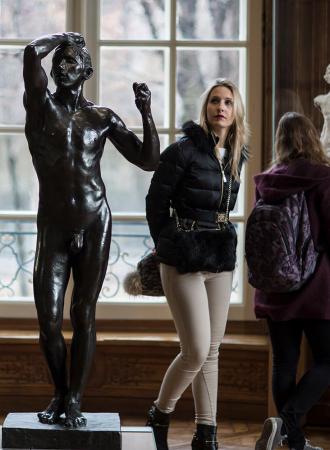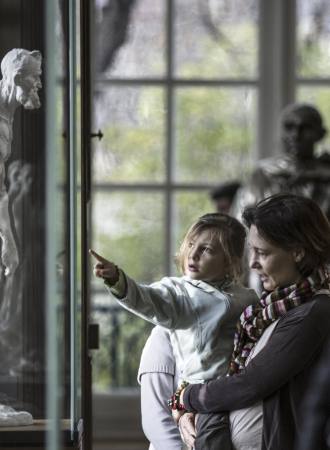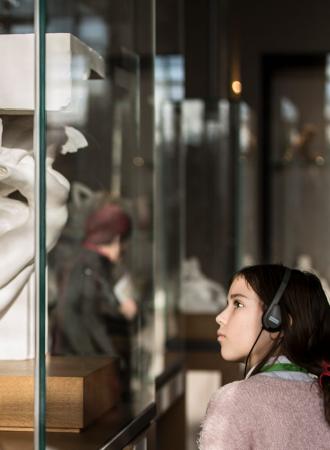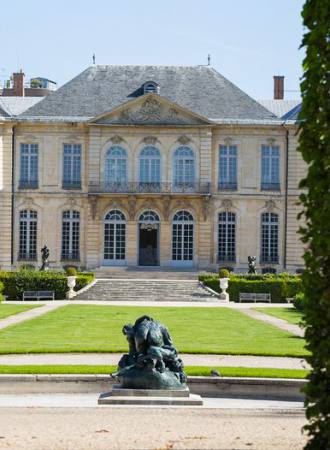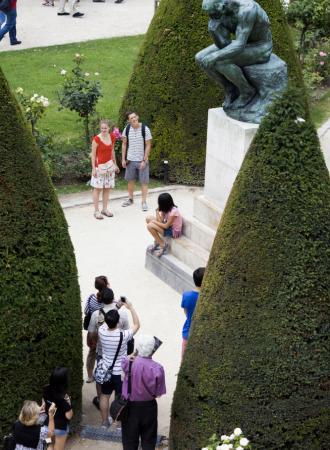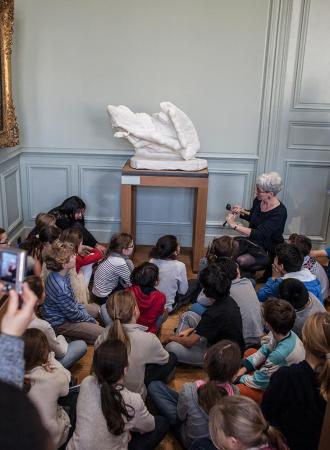Search the site
Respecting Rodin's moral right
A WARNING TO COLLECTORS ABOUT THE NOTION OF AUTHENTICITY
The Musée Rodin has a mission : to ensure the sculptor’s moral right is respected
By three donations made on 1 April, 13 September and 25 October 1916, accepted by the law of 22 December 1916, Auguste Rodin donated all his works to the French State, together with the artistic property rights attaching to them.
The Musée Rodin is vested with the capacity of Rodin’s beneficiary as defined by the legal provisions concerning literary and artistic property. Under the terms of Decree No. 93-163, passed on 2 February 1993, the principal task of the museum is to “make known Rodin’s work and ensure the moral right attaching to it is respected” (Article 2).
Original editions in bronze
Article R. 122-3 of the Code de la Propriété Intellectuelle [Intellectual Property Code] stipulates that editions of sculptures limited to twelve numbered casts, including artist’s copies, are considered to be original works of art. In accordance with Decree no. 93–163, relating to the Musée Rodin, passed on 2 February 1993 and consolidated on 7 December 2005, the museum limits its original editions to twelve casts, numbered 1/8 to 8/8 and I/IV to IV/IV, including the existing original editions.
Reproductions
Decree no. 81–255 of 3 March 1981 on stamping out fraud in transactions of works of art and collectables stipulates that any facsimile, aftercast, copy or other reproduction of a work of art or collectable must be described as such (Article 8). Consequently, the terms “reproduction” and “aftercast” must be mentioned on invoices and in catalogues, articles and, more generally, in all relevant documents.
Furthermore, any facsimile, aftercast, copy or other reproduction of an original work of art executed after the decree of 3 March 1981 came into force must be marked “Reproduction” in a visible and indelible manner (Article 9).
“Visible” is taken to mean “immediately legible”, without it being necessary to look for the mark “Reproduction”. This requirement is not fulfilled if the search involves handling the object or turning it upside down. The word “Reproduction” should be inscribed in hollow or high relief on the base or on the figure itself in a visible manner.
The Musée Rodin’s sales department offers reproductions of Rodin’s works for sale. All are marked “Reproduction” in a visible and indelible manner. To avoid confusion with original editions in bronze, these casts are made in resin.
Beware of confusing original editions in bronze with reproductions
The Musée Rodin reports the presence of a growing number of bronze “reproductions” or “aftercasts”, whose appearance fosters confusion with original casts authorized by the artist or the Musée Rodin. When put up for sale, these “reproductions” or “aftercasts” are often accompanied by documents, notably certificates attesting to their alleged “authenticity”.
The confusion thus created enables “works” to be ascribed quality sought after by collectors: rareness.
One may cite, for example, copies of The Thinker, The Age of Bronze and even the Monument to the Burghers of Calais.
Since the original edition in bronze is frequently complete, any new edition of these sculptures in bronze can only be reproductions and casting them without the mark “Reproduction” constitutes an infringement of Rodin’s moral right.
The Musée Rodin wishes to remind the public that it refuses to allow anyone to use moulds and original plaster models from Rodin’s studio now in the museum’s collections.
Any statement to the contrary, claiming that the museum has authorized the use of works or moulds in its possession can consequently only conceal an attempt to sell a work under false pretences.
The right to respect
Under the terms of Article 121–1 of the Code de la Propriété Intellectuelle, the artist enjoys the right to respect of his name, his quality and his work; this right to respect is perpetual, inalienable and imprescriptible. The form, spirit, integrity and details of his work must be neither distorted nor deformed.
Among the moral rights accorded to the artist are the right to paternity, based on which the Musée Rodin contests the fraudulent attribution to Rodin of a work of which he is not the author, and the right to respect of his work, based on which the Musée Rodin acts to ensure that the artistic integrity and spirit of Rodin’s work are respected.
Authentification
Giving a verdict on the authenticity of a plaster or bronze that has been submitted for examination is not part of the Musée Rodin’s remit.
The authentication of any supposedly original work may first be subject to review by experts.
However, it would be helpful to inform the director of the Musée Rodin (19 boulevard des Invalides, 75007 Paris) of any works attributed to Rodin.
Unauthorized use of marks belonging to the Musée Rodin
The marks R, RODIN, AUGUSTE RODIN and musée RODIN are the exclusive property of the Musée Rodin.
Consequently, any reproduction, use, appending, imitation or alteration, in any way whatsoever, of one or several of these marks, constitutes forgery, incurring the responsibility of the author, and is strictly prohibited under the terms of Article L 716–1 of the Code de la Propriété Intellectuelle.
Moreover, the Musée Rodin reserves the right to sue anyone who, without the museum’s knowledge, misappropriates, duplicates or exploits material previously used to cast an original edition in bronze or a reproduction in resin for the museum.
THE MUSÉE RODIN MAY BE INFORMED
By Post
Musée Rodin
19 bd des Invalides
75007 Paris
By e-mail
herpin@musee-rodin.fr
accompanied by photographs and mentioning
- its provenance
- its size (height, width, depth)
- the different marks or inscriptions visible on the piece
Musée Rodin
19, bd des Invalides
75007 Paris
Tél. 33 (1) 44 18 61 10
www.musee-rodin.fr
Download
- Press release(pdf, 248.5 ko)
